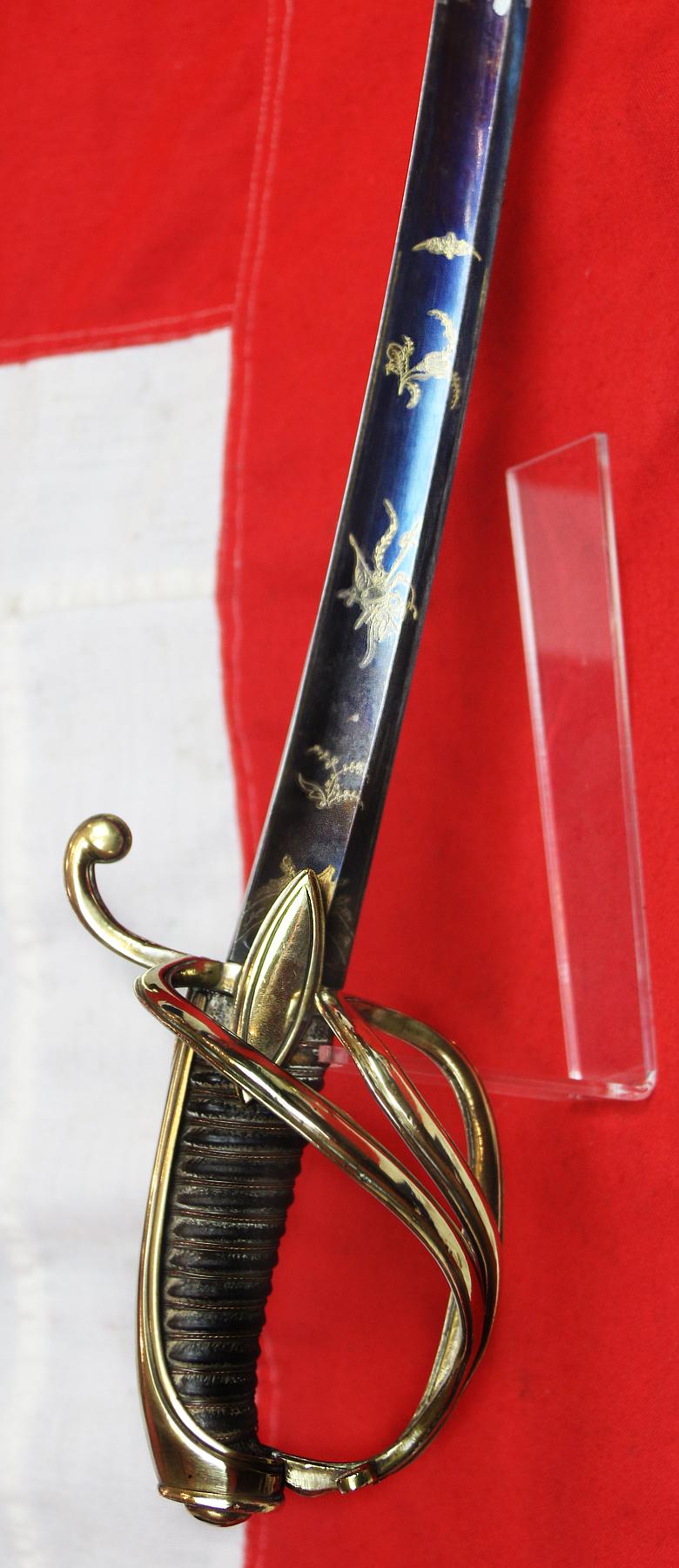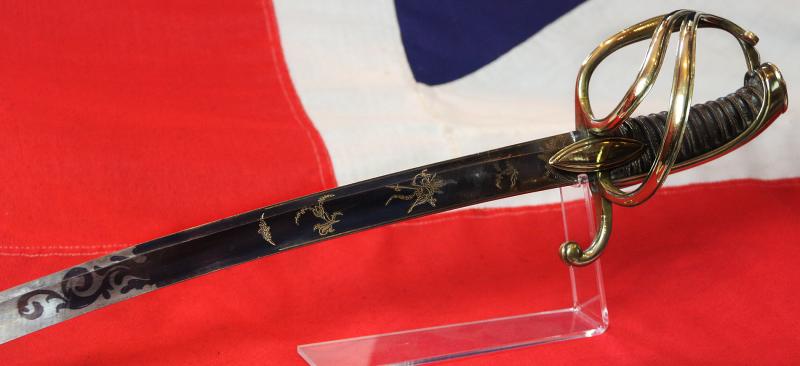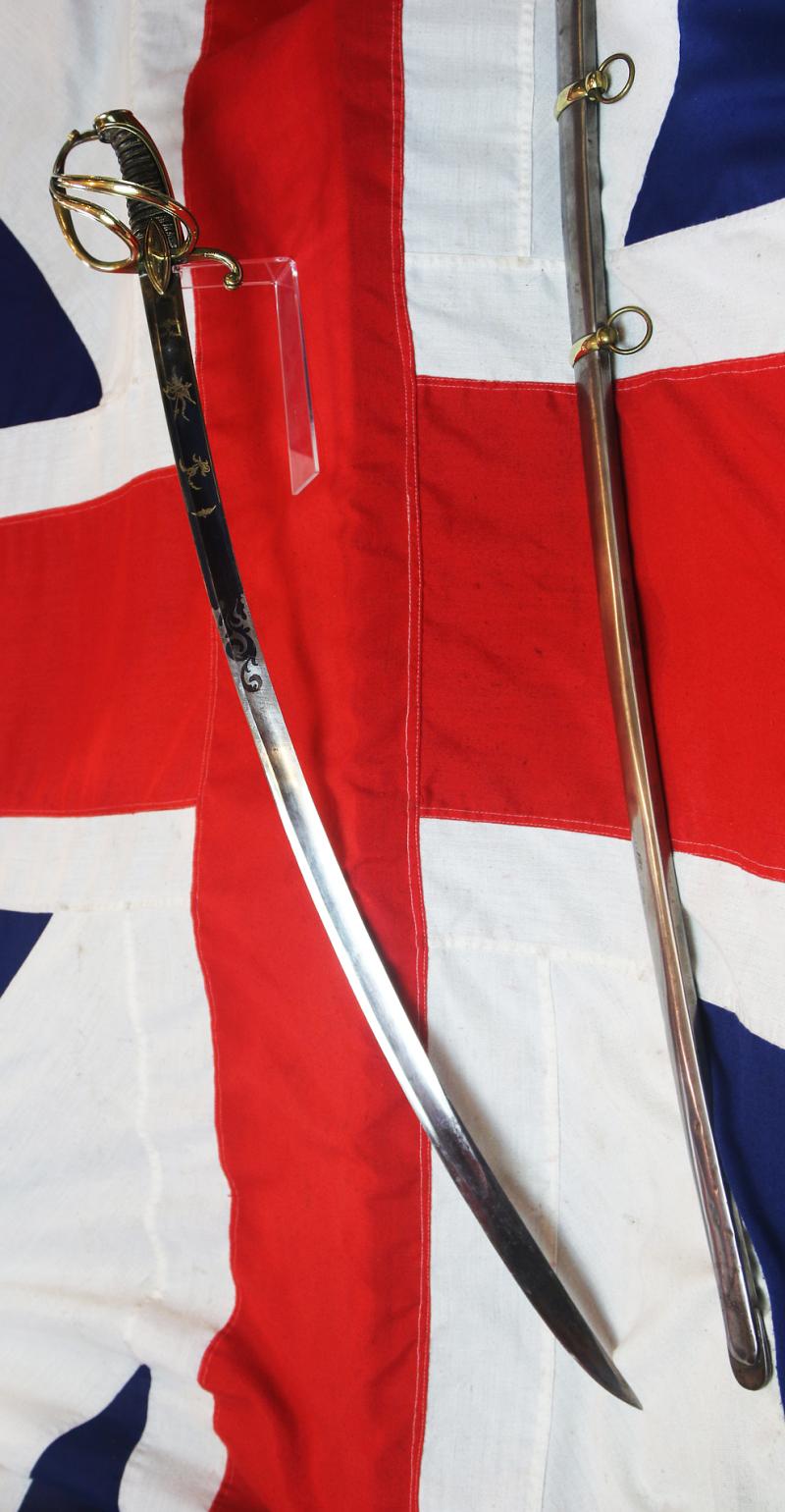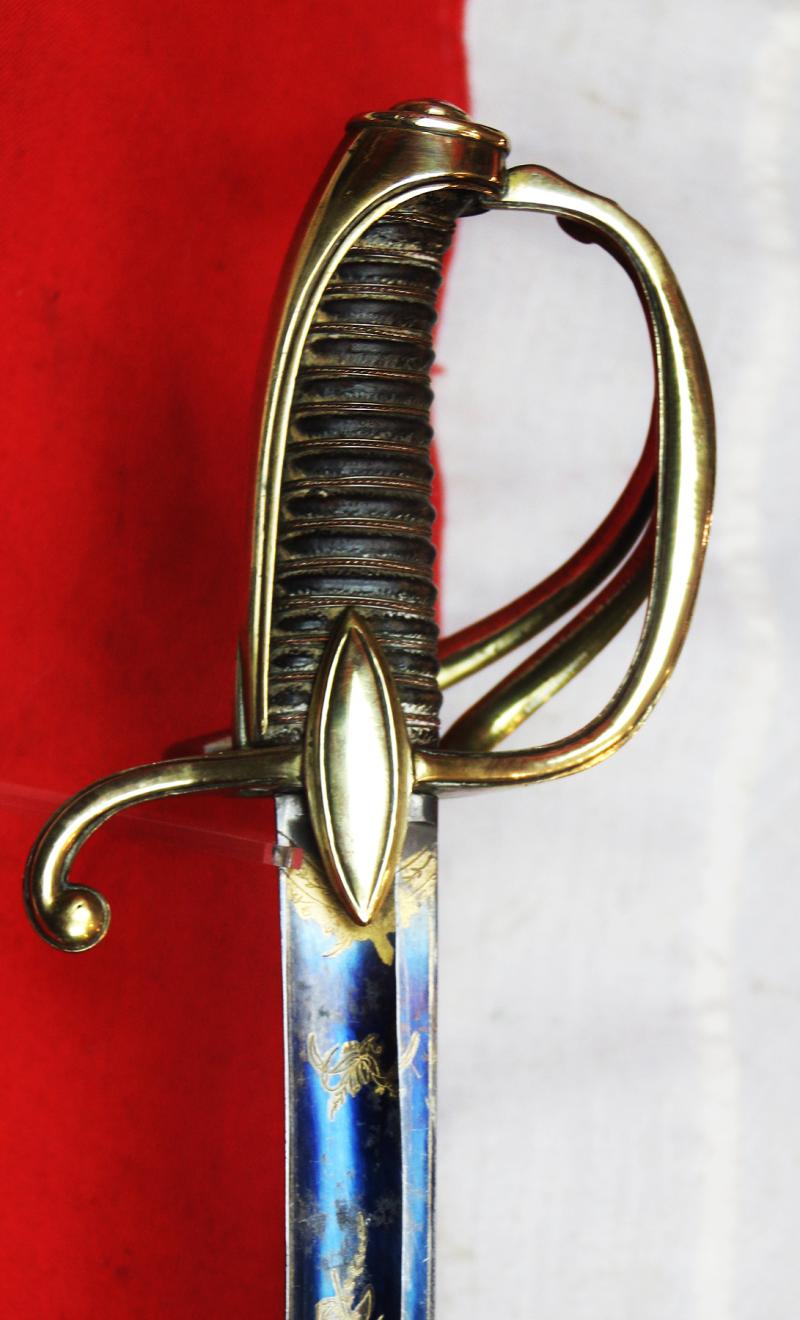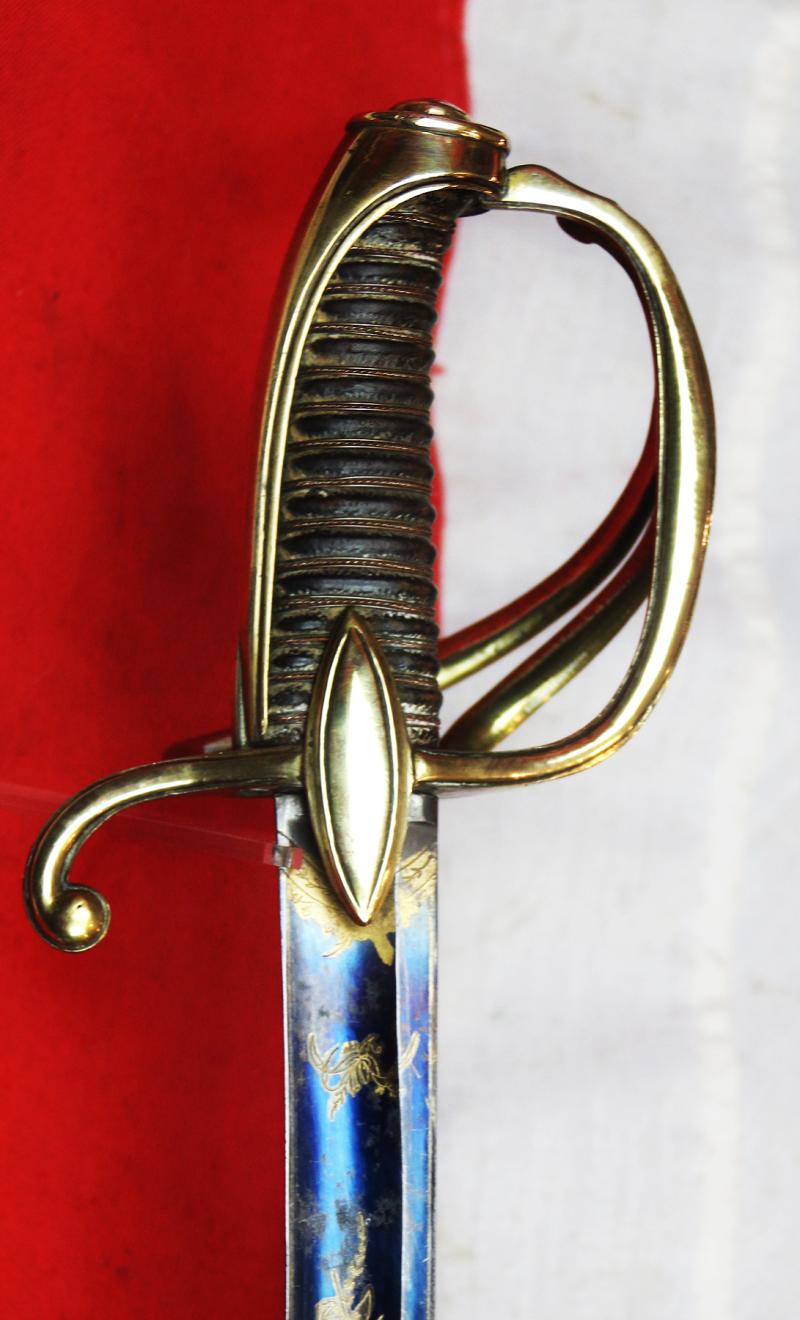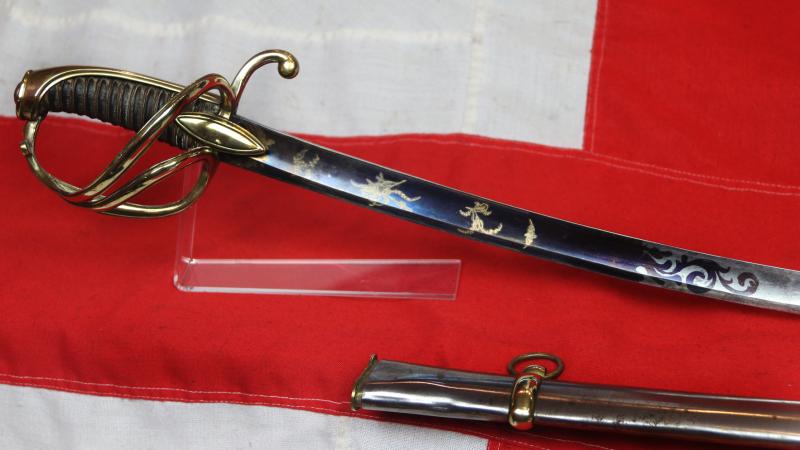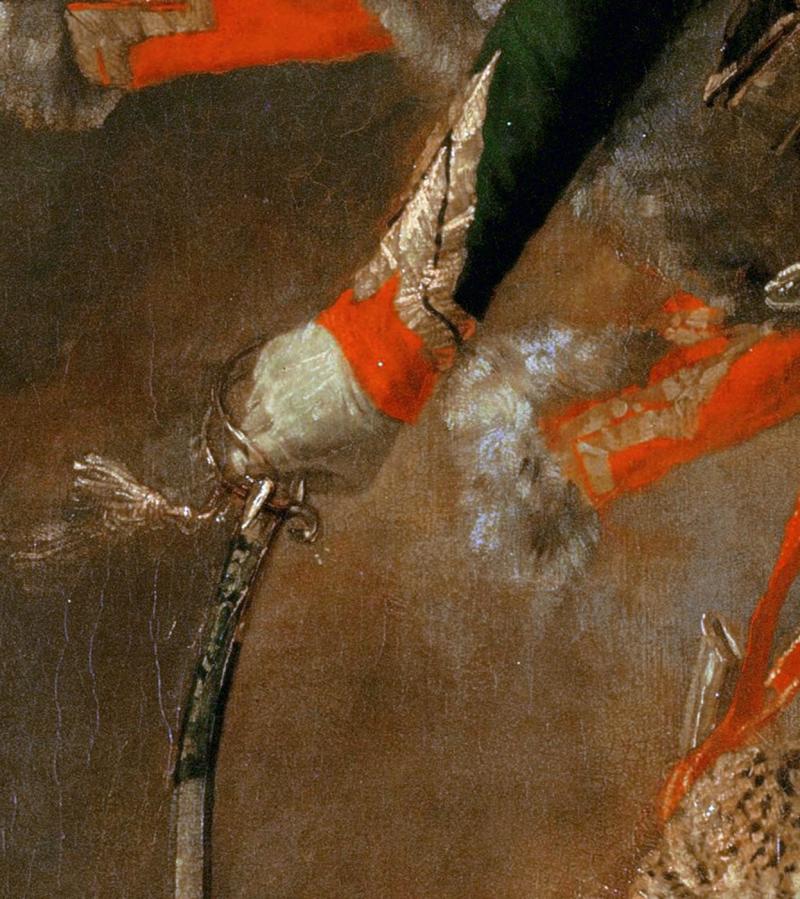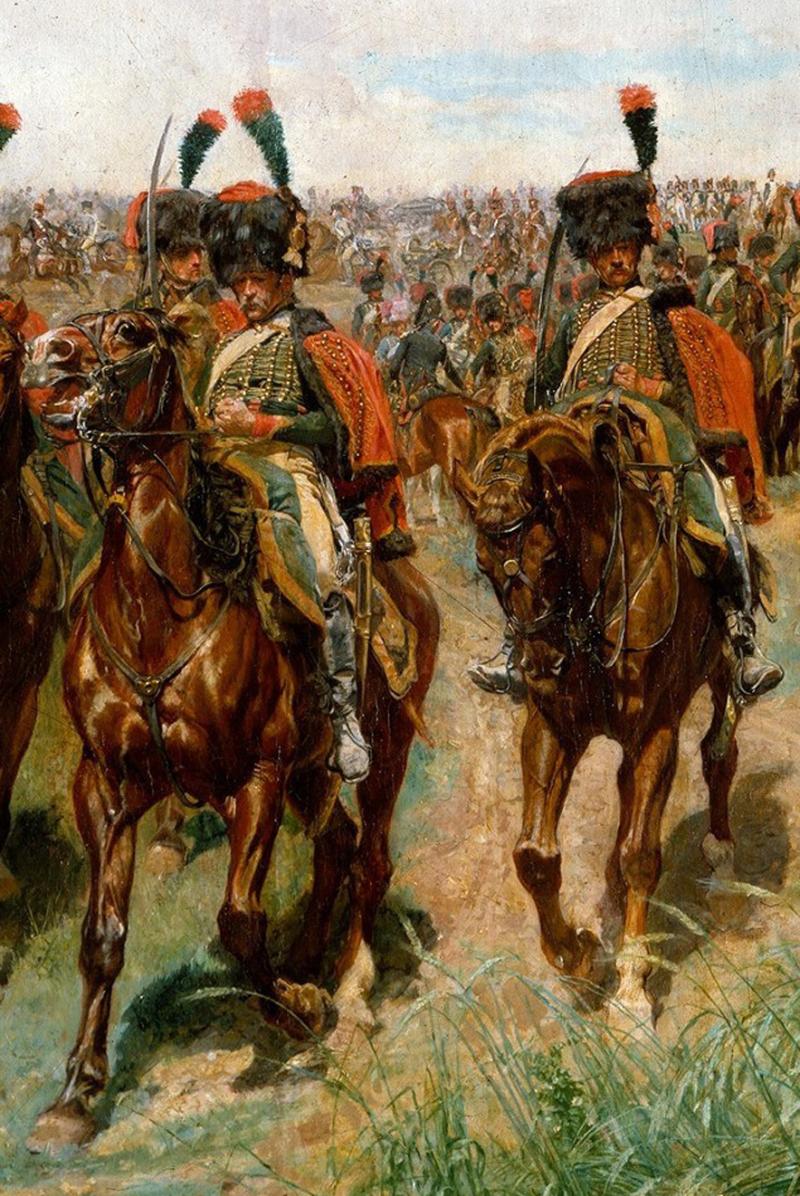A Rare & Absolutely Stunning 1st Empire, Combat, 'Blue and Gilt' Officer's Sabre of the Cavalerie Legere, Hussards, and Mounted Chasseurs. An IX, Circa 1810, and by Officers of the Mounted Chasseurs of the Imperial Guard
A fabulous Ist Empire deluxe quality Light Cavalry officer's 'blue and gilt' sabre with three bar guard hilt called "Hunter-style". Maker marked blade, within the gilt under one langet, S & K for Schnitzler and Kirschbaum, a well regarded maker of swords for 1st Empire officers from December 1808. Many officers swords marked S & K are in Les Invalides Musee de l’Armee in Paris. See ref below;
Light cavalry Hussars.
These fast, light cavalrymen were the eyes, ears, and egos of the Napoleonic armies. They regarded themselves as the best horsemen and swordsmen (beau sabreurs) in the entire Grande Armée. This opinion was not entirely unjustified and their flamboyant uniforms reflected their panache. Tactically, they were used for reconnaissance, skirmishing, and screening for the army to keep their commanders informed of enemy movements while denying the enemy the same information and to pursue fleeing enemy troops. Armed only with curved sabres and pistols, they had reputations for reckless bravery to the point of being almost suicidal. It was said by their most famous commander General Antoine Lasalle that a hussar who lived to be 30 was truly an old guard and very fortunate. Lasalle was killed at the Battle of Wagram at age 34. There were 10 regiments in 1804, with an 11th added in 1810 and two more in 1813.
Chasseurs à Cheval (Mounted Hunters)
These were light cavalry identical to hussars in arms and role. But, unlike the chasseurs of the Imperial Guard and their infantry counterparts, they were considered less elite. Their uniforms were less colourful as well, consisting of infantry-style shakos (in contrast to the fur busby worn by some French hussars), green coats, green breeches, and short boots. They were, however, the most numerous of the light cavalry, with 31 regiments in 1811, 6 of which comprised Flemish, Swiss, Italians and Germans. was a cavalry composed of chasseurs but on the horse, they could ride into melee or shoot as light infantry
The Mounted Chasseurs of the Imperial Guard would use this form of sword, and officers of wealth and status could afford, if they so chose, to have Chasseurs à cheval de la Garde impériale engraved onto the sword blades back strap etc. But many chose not to.
Chasseurs à cheval de la Garde impériale constituted a light cavalry regiment in the Consular, then Imperial Guard during the French Consulate and First French Empire respectively. They were the second senior "Old Guard" cavalry regiment of the Imperial Guard, after the Grenadiers à Cheval. The regiment had its origins in the Guides raised by General Bonaparte during his Italian Campaign of 1796. It was the Chasseurs that usually provided personal escort to Napoleon, and he often wore the uniform of the regiment in recognition of this service. The regiment was not only known for its lavish uniform, but its combat history as well.
On 1 August 1811, the regiment was increased to five squadrons and the vélites were done away with. During the year, squadrons were sent successively to serve with the divisions of the Garde in Spain. Guyot was promoted général de division, but still retained the command. To replace Corbineau and Daumesnil as majors, the regiment received Colonel François d'Haugéranville (6 August) and General Baron Exelmans (24 December).
On 6 May 1812, General Lefebvre-Desnouettes, who had escaped by breaking his parole, returned from his captivity in England and resumed command of the regiment. The chasseurs, five squadrons and the company of Mamluks, went through the Russian campaign, but though they lost 500 men, they only had 10 officers hit. At Borodino, they had no officer casualties at all. But on 25 October, the day after the Battle of Maloyaroslavets, two squadrons, escorting the Emperor on a reconnaissance, were sharply engaged and had 4 officers wounded. A body of Cossacks appeared suddenly from a wood and charged straight at Napoleon. General Rapp and the escort managed to beat them off, but not before one had fought his way to within twenty yards of the Emperor. From this day forth, haunted by the fear of captivity, he always carried a bag of poison on a string about his neck. The regiment's losses in this campaign must on the whole be attributed not so much to the fighting as to the Russian climate.
In 1813, the regiment was expanded from five to nine squadrons. The first five of these remained under the Old Guard while the newly raised 6th through 9th squadrons formed part of the Young Guard and in 1815 were redesigned as the 2e régiment de chasseurs de la Garde impériale.
While Napoleon is best known as a master strategist and charismatic presence on the battlefield, he was also a tactical innovator. He combined classic formations and tactics that had been used for thousands of years with more recent ones, such as Frederick the Great's "Oblique Order" (best illustrated at the Battle of Leuthen) and the "mob tactics" of the early Levée en masse armies of the Revolution. Napoleonic tactics and formations were highly fluid and flexible. In contrast, many of the Grande Armée's opponents were still wedded to a rigid system of "Linear" (or Line) tactics and formations, in which masses of infantry would simply line up and exchange vollies of fire, in an attempt to either blow the enemy from the field or outflank them. Due to the vulnerabilities of the line formations to flanking attacks, it was considered the highest form of military manoeuvre to outflank one's adversary. Armies would often retreat or even surrender if this was accomplished. Consequently, commanders who adhered to this system would place a great emphasis on flank security, often at the expense of a strong centre or reserve. Napoleon would frequently take full advantage of this linear mentality by feigning flank attacks or offering the enemy his own flank as "bait" (best illustrated at the Battle of Austerlitz and also later at Lützen), then throw his main effort against their centre, split their lines, and roll up their flanks. He always kept a strong reserve as well, mainly in the form of his Imperial Guard, which could deliver a "knockout blow" if the battle was going well or turn the tide if it was not.
Ref; 'German Knife and Sword Makers' ( Complete Edition A to Z Hardcover – published 2015 )
by Anthony Carter (Author), John Walter (Author), Henning Ritter (Author). John Walter has been a most welcome visitor to us for decades, and a very dear friend and colleague of our late colleague of over 30 years, Christopher Fox.
Code: 25286



